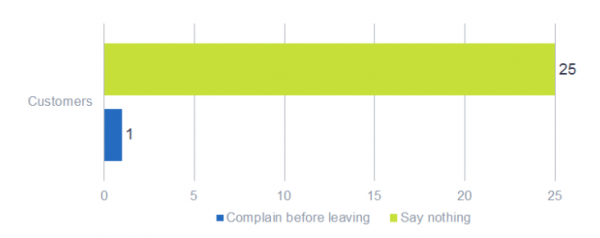
Customer experience is such a catchphrase in marketing today it even gets its own trendy acronym: CX. Improving customer experience requires integration, collaboration, data analysis and more.
Companies focused on maximizing satisfaction, with regard to the entire customer journey, have the potential to increase customer satisfaction by 20%. — McKinsey
Customers today have greater control of their buyer’s journey. They are researching anonymously and gaining information from online resources and social sharing before even approaching a brand salesperson. Offering positive customer experiences is pivotal in this environment. Inbound marketing helps establish this great customer experience early on. The happy customer is a loyal customer. The loyal customer lifts your brand awareness and improves marketing effectiveness by amplifying the message socially.
LinkedIn, Twitter, Facebook and YouTube are the top 4 social media platforms for B2B. (B2B Social Media Marketing Statistics)
Unhappy customers, on the other hand, have greater power. The customer who has a negative experience will leave (a costly loss). Further, that customer can diminish your brand reputation going to social media to complain or vocalizing their bad experience.
Customer experience leaders outperformed the broader market, generating a total return 26 points higher than the S&P 500 Index. — Watermark Consulting
Related reading: Why is Customer Experience Important
While everyone in a business is responsible for customer experience, the bulk of the job falls to marketing. Paying attention to sales and conversions comes naturally, but CX-focused marketers also address loyalty and advocacy. Fostering bonds with B2B customers is key.
Better influence CX by recognizing the full customer journey. Paying attention only to attract and convert stages of the journey, doesn’t address the entire customer experience. Marketers today know they shouldn’t forget about the customer once they reach the close stage of the journey, but there should also be strategies in place to delight the existing customer.
The Rx:

According to Bain & Company and Earl Sasser of Harvard Business School, a 5% increase in customer retention can increase profits by up to 95%.
Everyone can contribute to CX success. You already know marketing needs to collaborate with sales to effectively turn prospects into customers. However, unified CX efforts can involve departments across a company. For example, working with customer service agents to increase empathy and patience when addressing customer questions and concerns.
The Rx:
Companies with strong omni-channel customer engagement strategies retain an average of 89% of their customers, as compared to 33% for companies with weak omni-channel strategies. — Aberdeen Group

Marketers can readily list the metrics that measure conversion success. Yet it will help also to identify the metrics that communicate customer satisfaction, loyalty, and advocacy. Gartner’s CX report offers the example of a financial services firm employing text analysis of open-ended survey questions to establish customer satisfaction levels.
The Rx:
With 89% of companies expecting to compete based on CX, compared to 36% in 2012, improving customer experience needs to start now.
https://www.ironpaper.com/articles/inbound-marketing-statistics/
Improving Customer Experience Sources:
Fatemi, F. (2016, October 31). The Problems The Inbound Movement Has Created For Marketing. https://www.forbes.com/sites/falonfatemi/2016/10/31/the-problems-the-inbound-movement-has-created-for-marketing/#557369a0768f
Kolsky, E. (2015, September 3). CX for Executives. https://www.slideshare.net/ekolsky/cx-for-executives
Kulbytė, T. (2016, September 5). 32 customer experience statistics you need to know for 2016. https://www.superoffice.com/blog/customer-experience-statistics/
Mueller, A. (2016, November 1). 16 Reasons You Should Prioritize The Customer Experience. https://blog.invoca.com/16-reasons-prioritize-customer-experience/
Ray, A. (2016, April). How to Align Customer Experience with Marketing Channel Operations. https://www.gartner.com/doc/3275017/align-customer-experience-marketing-channel
by Jonathan Franchell, CEO of Ironpaper - For more tips and hacks: Need to remove a new line after h1 tags? Both web designers and SEO practitioners need to employ headline tags: H1, H2, H3 in several ways to improve web page structure and tag...

The marketing industry is transforming significantly due to generative AI and increasing market complexity. Gartner's prediction of a 25% decline in traditional search traffic suggests that the era of search engines is dying. AI tools, particularly...

The Crowded Arena of the IT Marketplace Updated December 2024 The Information Technology (IT) landscape is experiencing rapid growth and intensifying competition. IT spending is projected to reach nearly 5.1 trillion U.S. dollars in 2024, a...

Updated December, 2024 The field of digital marketing is evolving rapidly in response to new technology and changing buyer expectations. To help career-minded marketers, we’ve rounded up the top 10 skills needed to succeed in the field. These are...
